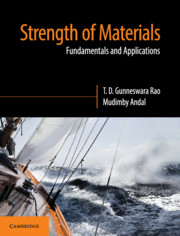Refine search
Actions for selected content:
37953 results in Cambridge Textbooks
Preface to the Third Edition
-
- Book:
- A History of East Asia
- Published online:
- 15 May 2025
- Print publication:
- 05 June 2025, pp xv-xvi
-
- Chapter
- Export citation

Basic Electronics
- Principles and Applications
-
- Published online:
- 03 June 2025
- Print publication:
- 01 March 2018
-
- Textbook
- Export citation

Strength of Materials
- Fundamentals and Applications
-
- Published online:
- 03 June 2025
- Print publication:
- 13 August 2018
-
- Textbook
- Export citation
Chapter 9 - How do I assess, provide feedback and report on learning?
- from Part 2 - Understanding learning and understanding teaching
-
-
- Book:
- Introduction to Education
- Published online:
- 14 June 2025
- Print publication:
- 02 June 2025, pp 214-239
-
- Chapter
- Export citation
Chapter 2 - How do I prepare to be a teacher?
- from Part 1 - Introduction to education
-
-
- Book:
- Introduction to Education
- Published online:
- 14 June 2025
- Print publication:
- 02 June 2025, pp 27-56
-
- Chapter
- Export citation
Chapter 14 - When do I stop learning?
- from Part 4 - Developing professional practice
-
-
- Book:
- Introduction to Education
- Published online:
- 14 June 2025
- Print publication:
- 02 June 2025, pp 369-391
-
- Chapter
- Export citation
Chapter 4 - Who are my students?
- from Part 1 - Introduction to education
-
-
- Book:
- Introduction to Education
- Published online:
- 14 June 2025
- Print publication:
- 02 June 2025, pp 81-106
-
- Chapter
- Export citation
Part 1 - Introduction to education
-
- Book:
- Introduction to Education
- Published online:
- 14 June 2025
- Print publication:
- 02 June 2025, pp 1-106
-
- Chapter
- Export citation
Acknowledgement of Country
-
- Book:
- Introduction to Education
- Published online:
- 14 June 2025
- Print publication:
- 02 June 2025, pp ii-ii
-
- Chapter
- Export citation
Chapter 11 - How do I create and maintain safe and supportive learning environments?
- from Part 3 - Working in education contexts
-
-
- Book:
- Introduction to Education
- Published online:
- 14 June 2025
- Print publication:
- 02 June 2025, pp 288-314
-
- Chapter
- Export citation
About the authors
-
- Book:
- Introduction to Education
- Published online:
- 14 June 2025
- Print publication:
- 02 June 2025, pp xiii-xiv
-
- Chapter
- Export citation
Chapter 5 - How do students learn?
- from Part 2 - Understanding learning and understanding teaching
-
-
- Book:
- Introduction to Education
- Published online:
- 14 June 2025
- Print publication:
- 02 June 2025, pp 108-127
-
- Chapter
- Export citation
Chapter 6 - Why are students taught a particular curriculum?
- from Part 2 - Understanding learning and understanding teaching
-
-
- Book:
- Introduction to Education
- Published online:
- 14 June 2025
- Print publication:
- 02 June 2025, pp 128-149
-
- Chapter
- Export citation
Chapter 13 - How do I make the most of professional experience?
- from Part 4 - Developing professional practice
-
-
- Book:
- Introduction to Education
- Published online:
- 14 June 2025
- Print publication:
- 02 June 2025, pp 340-368
-
- Chapter
- Export citation
Chapter 3 - Why is the education system organised this way?
- from Part 1 - Introduction to education
-
-
- Book:
- Introduction to Education
- Published online:
- 14 June 2025
- Print publication:
- 02 June 2025, pp 57-80
-
- Chapter
- Export citation
Chapter 1 - What is it to become a teacher?
- from Part 1 - Introduction to education
-
-
- Book:
- Introduction to Education
- Published online:
- 14 June 2025
- Print publication:
- 02 June 2025, pp 2-26
-
- Chapter
- Export citation
Chapter 8 - How do I implement effective teaching and learning?
- from Part 2 - Understanding learning and understanding teaching
-
-
- Book:
- Introduction to Education
- Published online:
- 14 June 2025
- Print publication:
- 02 June 2025, pp 181-213
-
- Chapter
- Export citation
Acknowledgements
-
- Book:
- Introduction to Education
- Published online:
- 14 June 2025
- Print publication:
- 02 June 2025, pp xv-xx
-
- Chapter
- Export citation
Chapter 7 - How do I plan for effective teaching and learning?
- from Part 2 - Understanding learning and understanding teaching
-
-
- Book:
- Introduction to Education
- Published online:
- 14 June 2025
- Print publication:
- 02 June 2025, pp 150-180
-
- Chapter
- Export citation
Chapter 10 - What is in a teacher’s toolkit?
- from Part 2 - Understanding learning and understanding teaching
-
-
- Book:
- Introduction to Education
- Published online:
- 14 June 2025
- Print publication:
- 02 June 2025, pp 240-286
-
- Chapter
- Export citation
